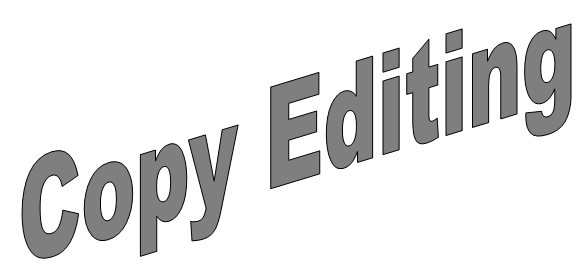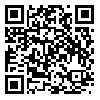Volume 8 - Early Access
pbp 2026, 8 - Early Access: 0-0 |
Back to browse issues page
Download citation:
BibTeX | RIS | EndNote | Medlars | ProCite | Reference Manager | RefWorks
Send citation to:



BibTeX | RIS | EndNote | Medlars | ProCite | Reference Manager | RefWorks
Send citation to:
Shamsa N, Saki K. Medicinal Plants as Analgesics: A Comprehensive Review of Their Benefits, Adverse Effects, and Mechanisms of Action. pbp 2026; 8
URL: http://pbp.medilam.ac.ir/article-1-304-en.html
URL: http://pbp.medilam.ac.ir/article-1-304-en.html
1- Assiastant Professor, Department of Anesthesiology, Kowsar Hospital, Urmia University of Medical Sciences, Urmia, Iran , Nasim.shamsa@gmail.com
2- Department of Psychiatry, School of Medicine, Imam Hossein Hospital, Shahid Beheshti University of Medical Sciences, Tehran
2- Department of Psychiatry, School of Medicine, Imam Hossein Hospital, Shahid Beheshti University of Medical Sciences, Tehran
Abstract: (682 Views)
Objective: Pain is among the most common symptoms encountered across a wide spectrum of diseases and has a profound impact on individuals' daily lives. The use of medicinal plants for pain relief is deeply rooted in traditional medical systems worldwide and has, in recent decades, gained renewed scientific interest as a natural and potentially safer approach to pain management. Owing to their bioactive constituents, these plants offer promising alternatives or adjuncts to conventional pharmacological treatments. The aim of this review is to examine and highlight the most significant native Iranian medicinal plants with documented analgesic properties, drawing from both classical traditional sources and recent scientific studies.
Methods: This narrative review was conducted using the keywords "medicinal plants," "pain," "analgesic," and "Iranian traditional medicine." Data were gathered from reputable scientific databases including Google Scholar, SID, Magiran, PubMed, and Scopus, alongside classical texts in traditional Persian medicine.
Findings: A wide array of medicinal plants with analgesic effects were identified, notably Mentha piperita (peppermint), Rosmarinus officinalis (rosemary), Lavandula angustifolia (lavender), Matricaria parthenium (feverfew), Valeriana officinalis (valerian), Salvia officinalis (sage), Ocimum basilicum (basil), Syzygium aromaticum (clove), Curcuma longa (turmeric), Capsicum annuum (chili pepper), Zingiber officinale (ginger), Boswellia serrata (frankincense), Rosa damascena (rose), Eucalyptus globulus, Cinnamomum verum (cinnamon), Nigella sativa, Salix alba (white willow), Harpagophytum procumbens (devil’s claw), Hypericum perforatum (St. John's wort), Aloe vera, and Camellia sinensis (green tea), all of which have been traditionally and increasingly used for pain control.
Conclusion: Medicinal plants hold a distinct and respected place in Iranian traditional medicine for their pain-relieving properties. Their mechanisms often include anti-inflammatory effects and modulation of the nervous system to promote calm and reduce discomfort. Given the well-known adverse effects of synthetic drugs, herbal alternatives offer a potentially safer and effective route for complementary and integrative pain therapies. Future research should focus on the isolation of active compounds, rigorous safety profiling, and the standardization of herbal formulations to better harness the clinical potential of these traditional remedies in modern medicine.

Methods: This narrative review was conducted using the keywords "medicinal plants," "pain," "analgesic," and "Iranian traditional medicine." Data were gathered from reputable scientific databases including Google Scholar, SID, Magiran, PubMed, and Scopus, alongside classical texts in traditional Persian medicine.
Findings: A wide array of medicinal plants with analgesic effects were identified, notably Mentha piperita (peppermint), Rosmarinus officinalis (rosemary), Lavandula angustifolia (lavender), Matricaria parthenium (feverfew), Valeriana officinalis (valerian), Salvia officinalis (sage), Ocimum basilicum (basil), Syzygium aromaticum (clove), Curcuma longa (turmeric), Capsicum annuum (chili pepper), Zingiber officinale (ginger), Boswellia serrata (frankincense), Rosa damascena (rose), Eucalyptus globulus, Cinnamomum verum (cinnamon), Nigella sativa, Salix alba (white willow), Harpagophytum procumbens (devil’s claw), Hypericum perforatum (St. John's wort), Aloe vera, and Camellia sinensis (green tea), all of which have been traditionally and increasingly used for pain control.
Conclusion: Medicinal plants hold a distinct and respected place in Iranian traditional medicine for their pain-relieving properties. Their mechanisms often include anti-inflammatory effects and modulation of the nervous system to promote calm and reduce discomfort. Given the well-known adverse effects of synthetic drugs, herbal alternatives offer a potentially safer and effective route for complementary and integrative pain therapies. Future research should focus on the isolation of active compounds, rigorous safety profiling, and the standardization of herbal formulations to better harness the clinical potential of these traditional remedies in modern medicine.

Type of Study: Review/Systemtic review |
Subject:
Herbal Drugs
Received: 2025/01/28 | Accepted: 2025/05/24 | Published: 2025/12/1
Received: 2025/01/28 | Accepted: 2025/05/24 | Published: 2025/12/1
References
1. Nasiri A, Abutorabi SM, Sane S. Intrathecal dexamethasone-bupivacaine combination with bupivacaine alone in spinal anesthesia for cesarean delivery. Caspian J Intern Med. 2024;15(3):414-20. doi:10.22088/cjim.15.3.414.
2. Barash PG, editor. Clinical anesthesia. Philadelphia: Lippincott Williams & Wilkins; 2009.
3. Sane S, Nasiri AA, Bahrami A, Kamalov Z, Hamoud Alshahrani S, Sajid Abdulabbas H, et al. The prophylaxis effect of ephedrine on hemodynamic variation in patients undergoing percutaneous nephrolithotomy surgery with spinal anesthesia. Int J Clin Pract. 2023;2023:8966501. doi:10.1155/2023/8966501.
4. Miller RD, Pardo M. Basics of anesthesia e-book. Philadelphia: Elsevier Health Sciences; 2011.
5. Robinson DH, Toledo AH. Historical development of modern anesthesia. J Investig Surg. 2012;25(3):141-9.
6. Alkire MT, Hudetz AG, Tononi G. Consciousness and anesthesia. Science. 2008;322(5903):876-80.
7. Rahimi M, Golparvar M, Hashemi ST, Nasiri A. The effect of adding magnesium sulfate, neostigmine and fentanyl to ropivacaine on sensory-motor block properties in lower extremity surgery under spinal anesthesia. J Isfahan Med Sch. 2022;40(689):766-74. doi:10.48305/jims.v40.i689.0766.
8. Miller RD, Eriksson LI, Fleisher LA, Wiener-Kronish JP, Cohen NH, Young WL. Miller's anesthesia e-book. Philadelphia: Elsevier Health Sciences; 2014.
9. Dixon BJ, Dixon JB, Carden JR, Burn AJ, Schachter LM, Playfair JM, et al. General anesthesia. Anesthesiology. 2005;102:1110-5.
10. Atlee JL. Complications in anesthesia e-book. Philadelphia: Elsevier Health Sciences; 2006.
11. Harris M, Chung F. Complications of general anesthesia. Clin Plast Surg. 2013;40(4):503-13.
12. Dimond EG. Acupuncture anesthesia: Western medicine and Chinese traditional medicine. JAMA. 1971;218(10):1558-63.
13. Bajwa SJ, Panda A. Alternative medicine and anesthesia: Implications and considerations in daily practice. AYU. 2012;33(4):475-80.
14. Cheng B, Hung CT, Chiu W. Herbal medicine and anaesthesia. Hong Kong Med J. 2002;8(2):123.
15. Kaye AD, Kucera I, Sabar R. Perioperative anesthesia clinical considerations of alternative medicines. Anesthesiol Clin North Am. 2004;22(1):125-39.
16. Nethathe GD, Russell SL. Traditional medicine use and the anaesthetist. South Afr J Anaesth Analg. 2014;20(6):221-5.
17. Dorman T. Herbal medicine and anesthesia. Curr Opin Anaesthesiol. 2001;14(6):667-9.
18. Ebrahimi SN, Naseri M, Hosseini SA. Iranian traditional medicine and herbal medicine: An overview of the history, principles, and concepts. J Herb Med. 2020;22:100326.
19. Zargari A. Medicinal plants. Tehran: University of Tehran Press; 1992.
20. Ghannadi A. Medicinal plants in Iran: history and perspectives. J Med Plants Res. 2015;9(24):718-26.
21. Mozaffarian V. A dictionary of Iranian plant names. Tehran: Farhang Mo’aser; 1996.
22. Shams-Ardekani MR, Rezaee MB, Yadegar A. Ethnobotanical study of medicinal plants in Iran. J Ethnopharmacol. 2013;146(2):399-410.
23. Keshavarzi Z, Shams-Ardekani MR, Mahmoudian M. Herbal medicine in the treatment of cardiovascular diseases in traditional Iranian medicine. J Tradit Complement Med. 2017;7(4):401-9.
24. Amini A, Ebrahimzadeh MA, Arzi A. Anti-inflammatory effects of medicinal plants used in Iranian traditional medicine: A review. J Complement Integr Med. 2021;18(1):123-34.
25. Malekmohammadi M, Ghanadian M, Naghizadeh M. A review on the most important medicinal plants of Iran in folk medicine. J Nat Remedies. 2018;18(1):10-20.
26. Rezaei M, Saravani R, Shams-Ardekani MR. Pharmacological properties of saffron and its constituents: A review based on traditional Iranian medicine. J Tradit Chin Med. 2019;39(5):777-85.
27. Saeidi M, Rafieian-Kopaei M, Hosseinzadeh H. Ethnopharmacology of medicinal plants in Iran: past and present. J Ethnopharmacol. 2018;210:147-57.
28. Azizi H, Mohagheghzadeh A. Medicinal plants and traditional medicine in Iran. Tehran: Institute of Medicinal Plants; 2017.
29. Abbaszadeh S, Saravani R, Shams-Ardekani MR. Herbal medicines in the treatment of diabetes mellitus in Iranian traditional medicine: A review. J Tradit Complement Med. 2016;6(4):434-43.
30. Hosseinzadeh H, Nassiri-Asl M. Pharmacological effects of Rosa damascena. Iran J Basic Med Sci. 2015;18(3):233-40.
31. Ghaderi S, Shams-Ardekani MR, Jafari SM. Traditional medicinal plants of Iran with anticonvulsant properties: A review. Iran J Pharm Res. 2019;18(1):73-84.
32. Rezazadeh S, Azadi A, Alizadeh H. Herbal plants effective in gastrointestinal diseases: Traditional Iranian medicine perspective. J Herb Med. 2020;21:100310.
33. Mirzaei H, Hosseinzadeh H. A review of traditional Persian medicine and its role in modern drug discovery. J Tradit Complement Med. 2019;9(2):91-102.
34. Ghorbani A. Review of medicinal plants used in Iranian traditional medicine for respiratory diseases. J Ethnopharmacol. 2021;270:113802.
35. Emami SA, Mohammadi H, Asgarpanah J. Chemical composition and pharmacological effects of Matricaria chamomilla: An overview. J Pharm Pharmacol. 2017;69(6):701-12.
36. Sadraei H, Asghari G, Emami SA. Medicinal plants of Iran effective on nervous system disorders. Iran J Pharm Res. 2016;15(3):459-67.
37. Zarshenas MM, Moein M, Petramfar P. A review on traditional Iranian medicinal plants effective on anxiety and depression. J Tradit Chin Med. 2018;38(4):510-21.
38. Zhang W, Zhang M, Han Y, Liu Y, Liu Y, Sun C. Combined acupuncture-medicine anesthesia used in thyroid surgery: A systematic review and meta-analysis. Medicine (Baltimore). 2023;102(1):e32582.
39. Duygun H, Epözdemir S. Phytotherapy and pain management. J Comple Alter Med Res. 2023;1(4).
40. Hansen SB. Mechanisms of general anesthesia. Annu Rev Biochem. 2025;94.
41. Chandrika UG, Karunarathna U. Anesthetics and analgesic activities of herbal medicine: review of the possible mechanism of action. Features Assess Pain Anaesth Analg. 2022;1:47-56.
42. Yousofvand N, Moloodi B. An overview of the effect of medicinal herbs on pain. Phytother Res. 2023;37(3):1057-81.
43. Haro-González JN, Castillo-Herrera GA, Martínez-Velázquez M, Espinosa-Andrews H. Clove essential oil (Syzygium aromaticum L. Myrtaceae): Extraction, chemical composition, food applications, and essential bioactivity for human health. Molecules. 2021;26(21):6387. doi:10.3390/molecules26216387
Send email to the article author
| Rights and permissions | |
 |
This work is licensed under a Creative Commons Attribution-NonCommercial 4.0 International License. |






